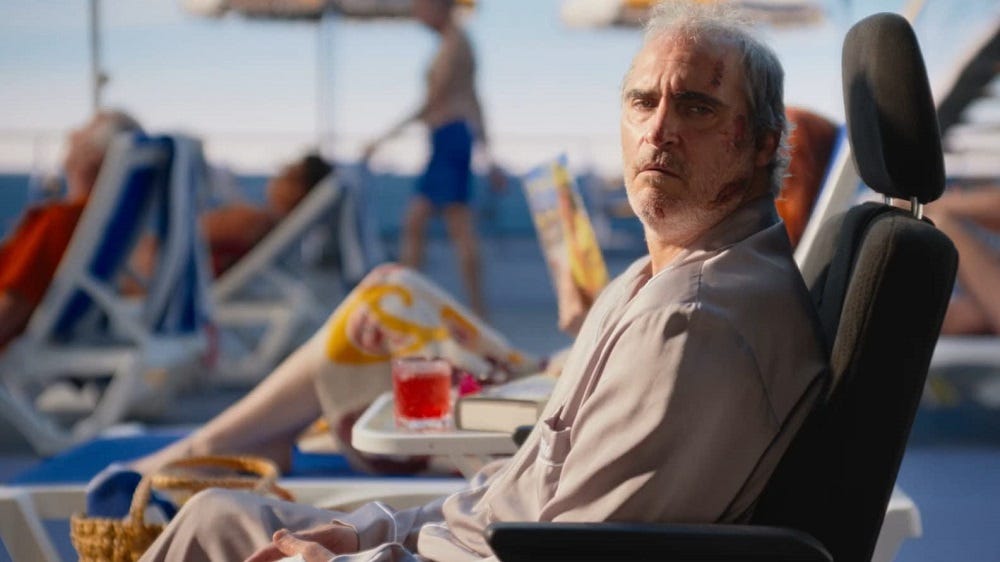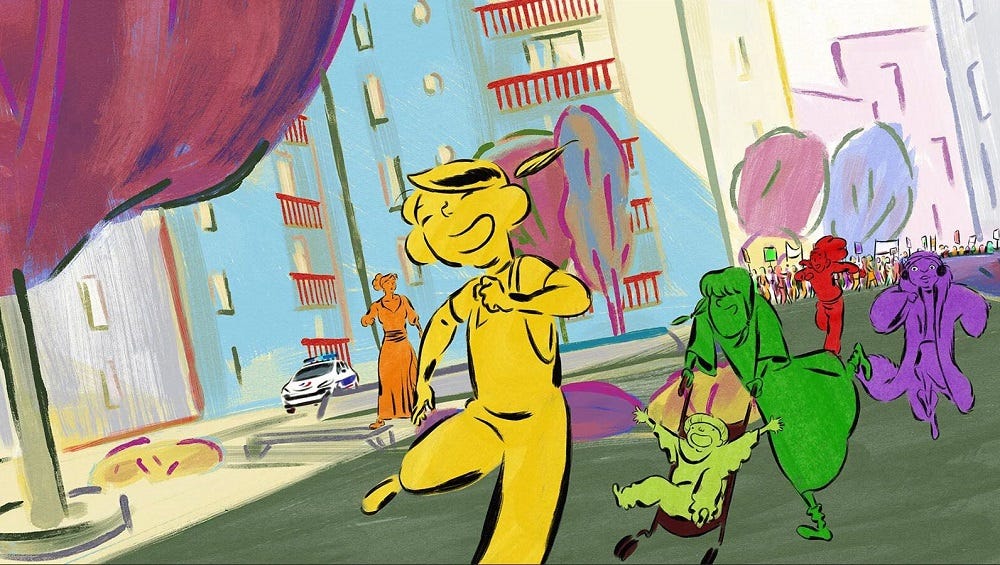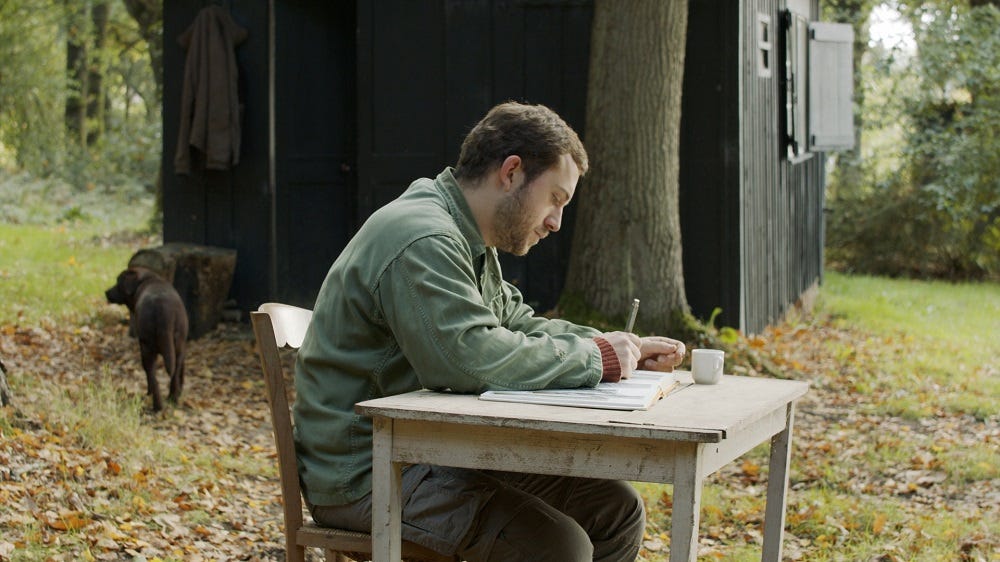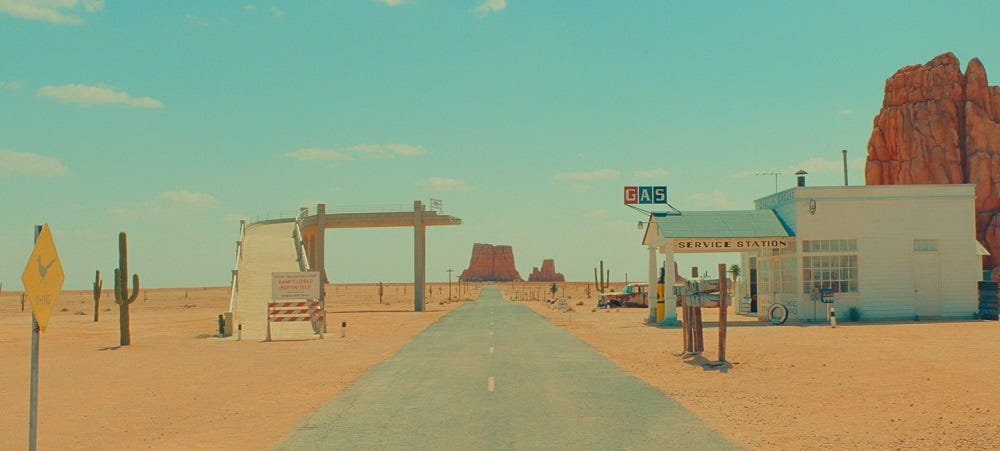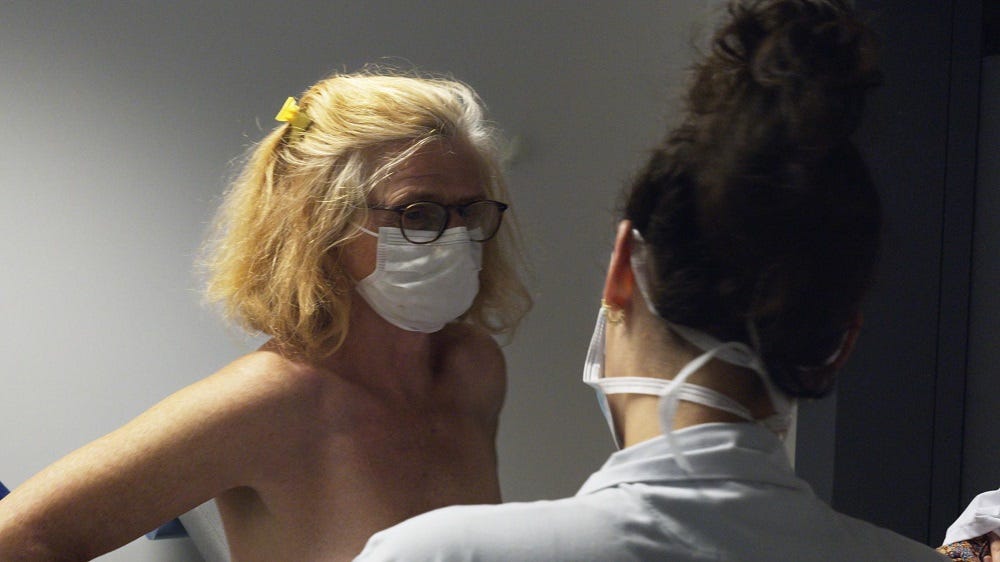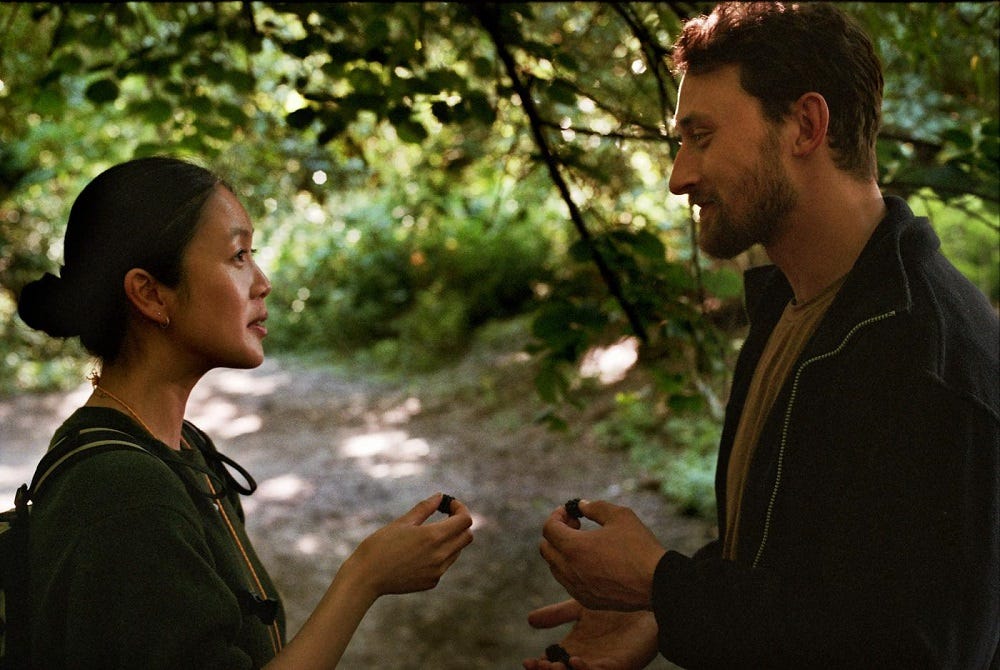I started this Substack up late last year to motivate myself to write more, and have a space to pursue things I wouldn’t normally be able to get published elsewhere. But life happens, and with life comes excuses to postpone my (not especially lofty) ambitions.
I also found myself hung up on two items, the first being volume. I don’t want to publish too much and bombard people’s inboxes, and if I want to just spout off some random reactions/thoughts I can go to a place like Twitter. The second item tends to happen if I ever try writing something close to analysis or opinion: Who the fuck are you? I can try to force myself to write about the state of the industry as I see it, but I’m no authority. I only know what I know, and I find most of the issues I want to speak on come from people who pretend like they know better when they don’t. I have no confidence that my two cents would be any different.
Talking about specific, tangible things I can respond to or use as a springboard, helps. I figured I would use the halfway point of the year to talk about some of what I’ve seen and found worthwhile. So here’s a list of movies from this year, along with a few thoughts on them.
Favourite Films of 2023 (So Far)
Some info/context for this list:
I’m basing this on world premiere in 2023 from January to June, since it’s easier to track
The list is comprised of every 2023 film I would give at least a 3/5 rating to, which means something I would recommend
17. Brooklyn 45 (dir. Ted Geoghegan)
I’ve only seen Ted Geoghegan’s debut feature We Are Still Here, but between this and Brooklyn 45 he’s firmly established the kind of thematic ground he wants to cover (in short: “America has a problem”). Set in December 1945, months after the end of World War II, Brooklyn 45 is a chamber piece, where a botched séance between old friends who served together in the War summons a malevolent spirit. Locked inside a parlour room, they can only leave once they satisfy whatever the entity wants from them.
The time period and self-contained nature takes influence from radio plays and The Twilight Zone/The Outer Limits, but John Carpenter’s The Fog came to my mind the most during Brooklyn 45. Just as Carpenter used the supernatural to expose the dark, bloody origins of a quaint, American small town, Geoghegan uses the evil force at the centre of his film to re-open the barely healed wounds of its ensemble: torture, massacres, paranoia, and hatred, among other traumas.
Geoghegan’s approach to reckoning with America’s past via ghost story/stage play and a cast of strong character actors (the highlights being Larry Fessenden setting the mood in the first act, and Anne Ramsay as the closest thing to a voice of reason) is the sort of thing that appeals directly to me, so I wasn’t surprised that I’d have a good time with Brooklyn 45.
16. John Wick: Chapter 4 (dir. Chad Stahelski)
Everything I’ve liked about the John Wick franchise is still here. The action sequences are always a treat to watch, since director Chad Stahelski understands action as performance rather than just a feeling, and how much better action plays when we see something tactile and “real.” Stahelski is happy to get the necessary plot and world building elements out of the way so we can get something like the unrelenting final hour, with four or five back-to-back fight sequences that pull off some of the most impressive technical feats across the entire series.
But as much as I enjoy Chapter 4, I’m too conflicted over its greater function. As a protagonist, John Wick’s presence is more abstract than ever. His revenge motive fulfilled in the first film, and his mission reduced to nothing more than “kill them all” (referring to the High Table, an unseen group of people who run the franchise’s convoluted assassin underworld), he’s more or less become the terrifying force of violence and death that’s been whispered about. He is, as the film’s villainous Marquis puts it, “a ghost in search of a graveyard.”
The series has moved beyond Wick, so Stahelski and the film’s screenwriters lay down a foundation to keep the gravy train flowing. New characters pop up like TV pilots, establishing themselves just enough so that audience response can dictate which ones deserve a future appearance or even their own spinoff. Even Wick himself can’t escape the potential for more; what should be a definitive ending for his character feels like it’s playing both sides, closing the door but leaving just enough of a crack open in case the filmmakers change their minds.
Part of the appeal of John Wick back in 2014 was how much it acted in opposition to mainstream trends at that time, whether it was the aforementioned approach to directing action, the fact that it wasn’t based on existing IP, or its swift, brutal violence. Now that Wick has proven itself to be a money-making juggernaut, Chapter 4 sees the franchise embrace current trends as it prepares to unleash its “universe” or sequels, prequels, limited series, and spinoffs. It’s been a fun ride across these four films, but what was once refreshing now has signs of fatigue settling in, and given the direction this series appears to be heading, I might just opt to use this point as the part where I get off.
15. Last Things (dir. Deborah Stratman)
I don’t have much to say about Deborah Stratman’s Last Things, but I did have a fun time with it. Stratman’s look at geology forces viewers to examine themselves outside of our own existence, and despite our dominance on Earth we’re surrounded by constant reminders of what came before us, and what will likely continue to exist long after we’re gone. I’d recommend Michael Sicinski’s write-up on the film, where he delves deeper into its post-humanism, and recommend people see it just for the sound work alone, as Last Things has one of my favourite soundtracks of the year.
14. Beau is Afraid (dir. Ari Aster)
Ari Aster has been a divisive figure for some, even though both Hereditary and Midsommar have established themselves as bonafide successes and new horror classics already. Beau is Afraid has Aster break free from the genre trappings of his previous films to become universally recognized as a divisive filmmaker, as he’s given three hours to pull off his epic odyssey dedicated to mommy issues. I’ve been a fan of Aster’s since Hereditary, and despite Beau is Afraid’s unevenness I’m more forgiving of the massive swings it takes. It also helps that Aster never takes himself that seriously, which might be the thing that saves him from turning into a Robert Eggers or Trey Edward Shults.
13. Afire (dir. Christian Petzold)
I sound more down on Afire in my review, but that’s only because it ends an incredible run of films from Christian Petzold. Barbara, Phoenix, Transit, and Undine are all great in their own ways and confirmed Petzold as one of the best directors working today. Afire is merely fine, a solid effort that feels like a letdown from what came before. But even Petzold’s take on an annoying writer’s growth into someone less annoying than before has its merits. And it’s almost impossible to take your eyes off of Paula Beer, who has such a strong onscreen presence it’s easy to see why Petzold keeps working with her.
12. About Thirty (dir. Martín Shanly)
A car crash on the way to a wedding reception kicks off Martín Shanly’s fragmented, episodic hopscotch through time, with his slacker protagonist Arturo (played by Shanly) recalling bad situations in his life surrounding several people he has no choice but to cross paths with at the wedding. Like with Afire, I’m less interested in films about a grown man’s arrested development and/or (late) coming of age, but About Thirty is a bit deceptive with its appearance. The abrupt cutting back and forth through time starts out as a sort of eccentric quirk, until Shanly reveals it to be more of an extension of his character’s mental state. There’s a sadder truth underneath Arturo’s inability to find any stability in his life, and most of what’s perceived as laziness or incompetence turns out to be a sign of someone never properly equipped to handle what life has thrown his way.
11. Music (dir. Angela Schanelec)
I really thought that, with I Was at Home, But… in 2019, Angela Schanelec found a way to make her style more accessible (at least in relation to her prior work). Now, four years later, she’s just as uncompromising as before, with Music having a structural resemblance to her 2016 film The Dreamed Path. Both films start in Greece and end in Germany, although with Music, Schanelec tackles the myth of Oedipus, a fact that might be lost on people if they didn’t know about it beforehand.
And there’s nothing wrong with that. Even as I write about Schanelec’s work in terms of “accessibility,” I know how useless that kind of framing is. It’s a natural inclination to think this way, since her direction is so singular, so against the grain of conventional narrative filmmaking, that it’s easier to hone in on what she does (or doesn’t do) as a point of comparison. I’ll admit that I have some ambivalence toward Schanelec’s handling of the source material here, as it’s difficult to watch Music without trying to piece together how each scene ties into Oedipus’ story. It’s a different kind of comparative thinking that puts the film in the shadow of its mythological origins.
Again, nothing wrong with that. I’d be more surprised if I came out of a Schanelec film and didn’t find myself grappling with it in some way, and parts of Music have some of the most sublime images I’ve seen from her work to date.
10. Tiger Stripes (dir. Amanda Nell Eu)
9. Chicken for Linda! (dirs. Sébastien Laudenbach & Chiara Malta)
8. The Crime is Mine (dir. François Ozon)
As I was writing about these three films separately, I thought it was better (and also somewhat lazier!) to write about them together, since all three are an all-around light, entertaining experience.
Nell Eu’s Tiger Stripes takes the familiar metaphor of puberty as a curse (see Carrie, Ginger Snaps, or even as recently as Turning Red) and gives it her own spin through the influence of cheesy monster B-movies. It also takes its time to transition into a full-blown horror film, with Nell Eu establishing her film’s school setting and the social dynamics between students to the point where Tiger Stripes could work on its own as a drama about a girl getting ostracized and bullied by her classmates. Luckily, Nell Eu decides to take the film’s central metaphor and run with it as far as she possibly can, and her film is all the better for it.
Sébastien Laudenbach & Chiara Malta’s Chicken for Linda! might be the biggest surprise I’ve had this year, since I didn’t expect to get so charmed by a kids’ movie. Primarily set over a chaotic day where Linda’s mom tries everything in her power to make her daughter a chicken for dinner, it’s a quick 70 or so minute comedy with a distinctive 2D drawing style that gives each character their own distinctive blob of colour, like someone highlighted over their sketches.
And then there’s François Ozon, a director who’s terrorized the festival circuit for years with middling to bad films, now making his best work in years with The Crime is Mine. I’m going to chalk it up to Ozon adapting from good source material (the film is based on a 1930s play). Ozon’s tale of a struggling actress and struggling lawyer scheming their way into jumpstarting their careers by falsely confessing to a murder and then making a spectacle out of the trial still has its relevance today, although Ozon throws in a few tweaks to make it more feminist and queer. It’s a shockingly entertaining romp, with some good, campy supporting turns by the likes of Fabrice Luchini and Isabelle Huppert, and probably a sign that Ozon should stick to less serious material for a little bit. It suits him a lot more than the dramas he’s been churning out for the past while.
7. Bad Living (dir. João Canijo)
I admit that I begrudgingly like Bad Living, the first half of João Canijo’s diptych that premiered at this year’s Berlinale, but it’s a hard film to embrace. Set at a hotel in Portugal that’s close to going bankrupt, it follows the hotel’s staff over several days: five women from the same family, with an emphasis on Piedade and her estranged daughter Salomé, who shows up unannounced. All five women are miserable, and Piedade is the agreed upon punching bag within the family, with everyone taking an opportunity to treat her horribly (worst of all might be Piedade’s own mother, who bonds with her granddaughter Salomé over their mutual dislike of Piedade).
It’s two deliberately paced hours of people wallowing in their own regrets and resentment, with Canijo and DP Leonor Teles applying a terrifying level of control over framing and blocking. Almost every shot traps characters within spaces in and around the hotel. Mirrors and reflective surfaces surround the five women frequently, a constant reminder of how they’re being percevied (or just their own awareness of being perceived at all times). The focus on windows, doors, and walls enclosing characters forces one to think of the spaces in geometric terms, a series of lines and shapes that obscure and oppress, while bodies move delicately within those spaces to avoid getting damaged. It’s alienating by design, yet Canijo’s direction is so precise it’s downright staggering to see the ways he conveys this fraught family’s relationships and the pain one generation can inflict on another.
6. Un prince (dir. Pierre Creton)
If you go to the Letterboxd page for Pierre Creton’s Un prince, you’ll see a slew of negative reviews. It seems like a lot of the crowd who caught it at this year’s Directors’ Fortnight didn’t take kindly to Creton’s look at a young man’s sexual experiences while he studies to be a gardener in Normandy.
I had a different response to Un prince, which I initially thought was uneven but my appreciation has only grown since watching it. Creton’s film barely resembles most of what normally plays at Cannes, at least in terms of who it focuses on. Sure, we’ve seen films about farmers, gardeners, and more generally the working class before, but not in the way Creton portrays them. Utilizing two sets of actors, one performing on screen with little to no dialogue, and the other providing voiceover narration for the characters, Creton and his co-writers give these characters space to express their inner thoughts, desires, and emotions.
They’re not put in a political or social context that can provide an adequate amount of distance for the viewer. They exist on their own terms, and Creton directs on his own terms as well. It’s a film from a wholly distinct filmmaker, operating in a realm outside of contemporary trends within cinema. It comes as no surprise to me that, when presented with the “challenge” of engaging with a work outside of one’s area of comfort, especially in the context of a film festival, people opted to reject it and move on.
5. Forms of Forgetting (dir. Burak Çevik)
Memory and its impermanence are at the centre of Burak Çevik’s latest film, which interviews a couple years after they’ve broken up and has them reminisce about their time together. That would sound easy enough, but Çevik takes things a step further. He films his subjects talking about their relationship, then has them reunite a few years later to watch the footage and provide commentary on it. We see the original footage and hear the commentary at the same time, so we get a photocopy of a photocopy of a photocopy: two people recalling the past, then recalling it again through the initial discussion. They don’t align on all the details of how they met and how they separated, but truths come out of what still lingers in their minds.
Çevik tackles these ideas through different locations, which both subjects comment on in terms of their own memories or as a springboard to discuss the topic in a broader sense. A story about a ship repaired with so many new parts plays over footage of an apartment getting remodeled, a greenhouse prompts a talk about plants forgetting their past selves (“The flower is what the seed forgets,” one of them says, a quote they heard from their therapist), and construction of the Istanbul Modern leads to a reveal involving the film itself, which Çevik intends to hide away for 14 years after showing it once in Turkey. Forms of Forgetting confronts the unrelenting forward trajectory of our lives with a sense of sorrow and acceptance, an effort to better understand our own slippery nature no matter how difficult it might be.
4. Tótem (dir. Lila Avilés)
Set over a single day, Lila Avilés’ Tótem starts with the familiar look of more recent festival fare (handheld camera, a tendency toward naturalism, flickers of social commentary in relationships between rich and poor characters) before it evolves into something more specific and melancholy.
For most of its runtime, Avilés stays close to the perspective of seven-year-old Sol, whose mother drops her off at Sol’d grandparents while they prepare to throw a party for Sol’s father. She’s aware that her father is sick, but she doesn’t fully understand the severity of the situation. Over the course of the day, Avilés does an effective job of conveying Sol’s situation, where she’s forced to deal with some of the hardest parts of life that her family can’t adequately process or protect her from. Part of that comes through Avilés’ use of space, with the grandparents’ house gradually filling up with different people and subplots that come in and out of Sol’s orbit.
It all comes together in the final act, when Avilés moves away from Sol to her parents and the ensemble of party guests who are there to say their final goodbyes. Tótem’s ability to take the messiness of life, filter it through the perspective of its young lead, and highlight the ambiguity and confusion of all of it, is the kind of achievement I didn’t expect to come out of a film like this.
3. Asteroid City (dir. Wes Anderson)
The town of Asteroid City exists in the middle of nowhere, both figuratively (it’s surrounded by nothing but desert) and literally (it’s a made up location for the play within the film). A sign says there’s a population of 87, but we see no houses, just businesses and the several people who operate them. This isolated locale, and its purpose as a permanent pit stop, gives it the appeal of doubling as an escape from the world. That is, until the whole town shakes due to atom bomb testing in the distance.
Like all of Anderson’s films, Asteroid City is busy, with several groups of people descending on the town: a recently widowed war photographer and his kids, a Marilyn Monroe-inspired actress and her daughter, families attending a science competition for their kids, government officials organizing the competition, a teacher and her class on a field trip, a group of cowboys, and more arrive at around the same time. Then there’s an encounter with an alien, military intervention, a quarantine, a rebellion against the military, and I haven’t even gotten to the wraparound story involving the production of the play itself.
Anderson uses the location’s sparseness to place its larger, existential questions front and centre. Whether it’s the absence of life (represented by the tragic loss of a loved one) or the idea of life beyond our planet (alien visitors with motives unknown), Asteroid City finds its ensemble face to face with the boundaries of human knowledge, and how the unknown dwarfs them to an imperceptible blip within life and the universe.
I run hot and cold on Anderson, but with Asteroid City (his best film in over a decade) I found the initial appeal of his work to be back in full force. Here’s a director who specializes in meticulous constructions, complex productions with exacting precision and structures resembling nesting dolls or Rube Goldberg machines, yet all of its focus stays on the messy, unpredictable aspects of life that go beyond our control. Asteroid City sees the necessity of the irreconcilable, and how the ways we deal with that issue, be it faith, science, or denial, bring us closer to some sense of meaning.
2. Our Body (dir. Claire Simon)
Convinced by her producer to film a documentary at a gynecological hospital in Paris, Simon observes dozens of patients in an order meant to mimic the cycle of life. We first see a pregnant teen discuss getting an abortion, and almost three hours later we watch a doctor tell an elderly woman they have no choice but to begin palliative care. In between, we see various discussions, consultations, and procedures. Simon captures all of it with the same amount of empathy and consideration, even when she becomes a subject of her own film.
There have been plenty of comparisons between Our Body and the work of Frederick Wiseman, which is understandable given the focus on an institution and the majority of scenes centered around meetings and discussions. But both filmmakers operate in different ways, both of them rewarding in their own right. Wiseman’s work puts an emphasis on editing, with the ideas and observations on a scene by scene basis coalescing into a thesis. Simon states the film and her intentions in the first several minutes, and through every moment she captures the film accumulates the power of her message. Here is the experience of multiple women, each one highlighting a different facet or nuance specific to their lives, all of them a piece of Simon’s bigger picture. As that picture comes into focus, the effect can be overwhelming. It’s rare to see a film this compassionate anymore, and I have a hard time imagining another documentary from this year coming close to what Simon accomplishes here.
1. Here (dir. Bas Devos)
It’s probably a cop out that I won’t write much on my #1 pick but it’s always been hard for me to describe why Bas Devos’ films work so well. There’s a shot in the final minutes of Here, where the sun sets and we watch lamps in a park turn on as rain starts to fall. Devos films it on 16mm, and manages to capture so much in a seemingly innocuous shot: a strong sense of place, a feeling of nostalgia, the satisfying sound of the lights turning on followed by the pouring rain. It’s the way he can make something so evocative with (what appears to be) so little, and delving into the how or why ruins the experience. Just see it for yourself, and hopefully you can get swept up into the mood and rhythm of Devos’ film.
What Else?
As always, I’m welcome to feedback/input/requests from readers, and if you’ve gotten this far I thank you for taking the time to read this. The distribution watches will continue being updated, with Venice being added in the coming weeks. And hopefully I’ll be more active on here than I am already, but no guarantees.







